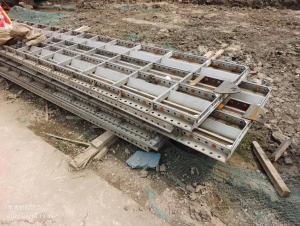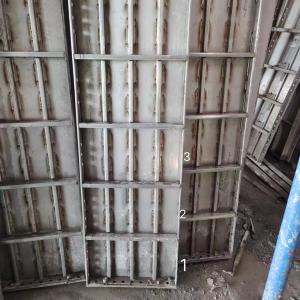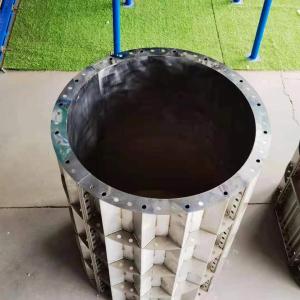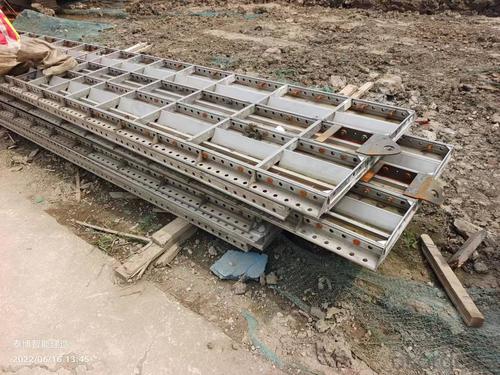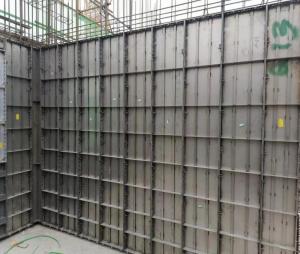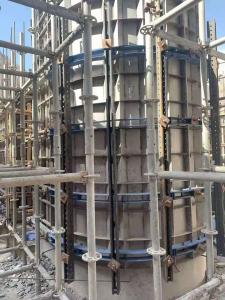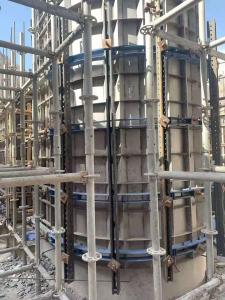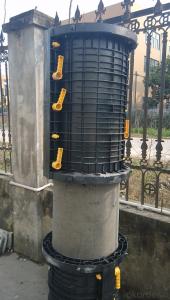Hot seller-column steel formwork,metal formwork, Stainless Steel Formwork
- Loading Port:
- Shanghai
- Payment Terms:
- TT or LC
- Min Order Qty:
- 1 set
- Supply Capability:
- 1000000 set/month
OKorder Service Pledge
OKorder Financial Service
You Might Also Like
Stainless steel formwork
Replaceable size aluminum formwork :400X1200mm , 400X1500mm
A modular panel formwork, specially designed for on-site concrete jobs where a fair – faced finish is required or where extremely high concrete pressure occur.
The panels are made of a high-quality painted steel frame and a top quality 5mm stain less steel sheeting. The sheet lies on top of the profiles so the joints between the panels are reduced to a very thin line
Advantages:
1 Stainless steel formwork, 100% follow the design of aluminum alloy formwork system, it is interchangeable, compatible and can be used together with aluminum formwork at the same time .
2It is made of high-strength stainless steel strip by rolling and laser welding. It has good corrosion resistance and high density,is not easy to rust and has no fire hazard.
3Long service life, many turnover times, high recycling value
The number of turnovers is large, especially the characteristics of no dust, no need to brush or less mold release agent, and the characteristics of low renovation costs will bring unlimited optimistic prospects to it.
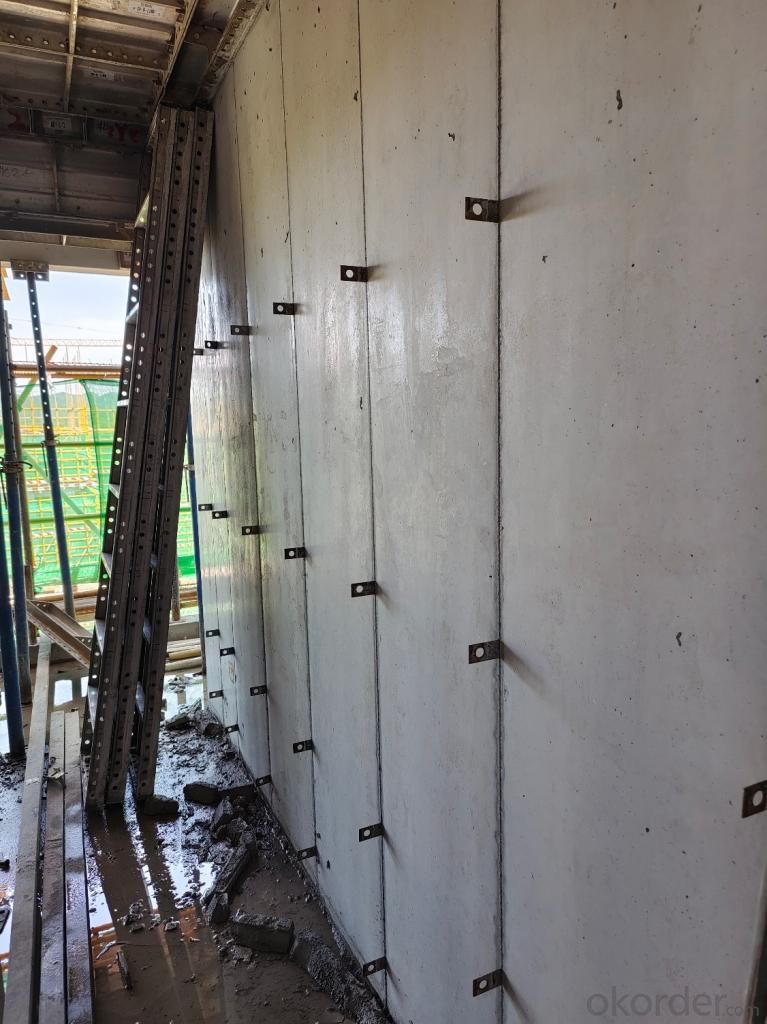
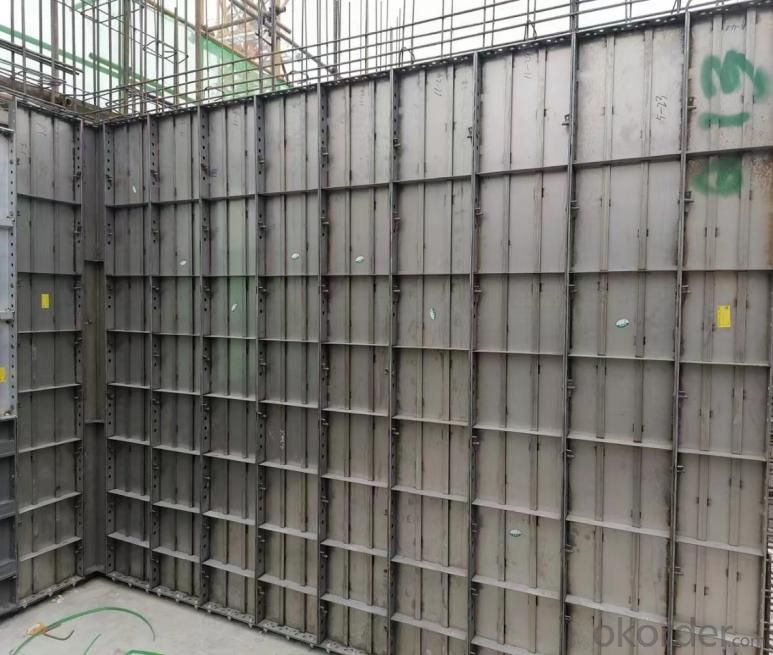
- Q: Can steel formwork be used for elevated walkways?
- Yes, steel formwork can be used for elevated walkways. Steel formwork offers high strength, durability, and stability, making it suitable for supporting the weight and load of an elevated walkway. Additionally, steel formwork provides a smooth and level surface, ensuring a safe and stable walking platform for pedestrians.
- Q: How does steel formwork prevent concrete mixture separation during pouring?
- In construction projects, steel formwork is employed to create a temporary structure that securely holds the concrete in position until it solidifies and becomes rigid. A significant advantage of utilizing steel formwork is its ability to prevent the concrete mixture from disintegrating while it is being poured. The steel formwork is meticulously designed and assembled to establish a tight enclosure for the concrete, guaranteeing that it maintains its intended shape and texture. It consists of firmly fastened steel panels and frames, which combine to form a sturdy structure. When the concrete mixture is poured into the steel formwork, it is effectively restrained by the formwork walls itself. The steel panels and frames offer a smooth and uniform surface onto which the concrete can be poured, effectively averting any separation or division within the mixture. Moreover, the steel formwork is purposefully constructed with accurately aligned joints and connections, which further prevents any leakage or permeation of the concrete mixture. This ensures the integrity of the concrete, preventing it from breaking down into its constituent materials such as aggregates, cement, and water. Additionally, the steel formwork possesses the capacity to withstand the pressure exerted by the weight of the concrete. This successfully averts any deformation or displacement of the formwork during the pouring process, as such movements could potentially lead to the separation or shifting of the concrete. All in all, the utilization of steel formwork provides a robust and steady structure that effectively prevents the concrete mixture from separating during pouring. It ensures the concrete maintains its desired form and consistency, ultimately resulting in a finished product that is of high quality and durability.
- Q: What are the common design considerations for steel formwork?
- To ensure the efficiency and effectiveness of steel formwork design, several factors must be taken into account. Firstly, the load-bearing capacity of the formwork needs careful calculation and design to support the weight of fresh concrete and any additional loads without deformation or failure. This involves evaluating maximum expected load and selecting the appropriate steel grade and thickness. Secondly, the formwork should be easily assembled and disassembled, which is crucial for projects with tight schedules or limited space. Modular components that can be quickly and accurately connected should be used, allowing for efficient construction and easy removal after the concrete cures. Thirdly, the desired surface finish of the concrete should be considered in the formwork design. Proper alignment and leveling are necessary for a smooth and consistent finish. Additionally, the formwork should be designed to prevent leakage or seepage, which could cause imperfections or structural issues. Stability and rigidity are also important considerations. The formwork must withstand lateral pressure from the fresh concrete without significant deformation or displacement. Proper bracing and tie systems should be incorporated for stability during the pouring process. Safety should be prioritized in the formwork design, providing a safe working environment with adequate access, guardrails, and fall protection systems. Installation and removal of safety features should also be considered. Lastly, the reusability and durability of the steel components should be taken into account. The formwork should be designed to withstand repeated use and resist corrosion or wear. Maintenance and storage considerations are also important for prolonging the lifespan of the formwork. In conclusion, the design of steel formwork should consider load-bearing capacity, ease of assembly and disassembly, surface finish requirements, stability and rigidity, safety, reusability, and durability. By carefully considering these factors, well-designed steel formwork can contribute to the successful and efficient construction of concrete structures.
- Q: I would like to ask the bridge column (D110) steel template thickness should be how much
- Parting is generally divided according to the release of simple or rounded way, according to the height of the construction plans and schedule requirements. Generally, the height of the column template is set at 1.52 or 0 5m in order to be easy to use.
- Q: How does steel formwork handle different concrete surface treatments?
- Steel formwork is highly versatile and can handle different concrete surface treatments effectively. The smooth and rigid nature of steel formwork allows for the application of various surface treatments, such as textured finishes, exposed aggregate, or decorative patterns, without compromising the quality or integrity of the concrete. Steel formwork provides a stable and durable framework that ensures the desired surface treatment remains intact during the concrete pouring and curing process. Furthermore, the reusability of steel formwork allows for consistent and reliable results across multiple projects with different concrete surface treatments.
- Q: Can steel formwork be used for both indoor and outdoor construction projects?
- Yes, steel formwork can be used for both indoor and outdoor construction projects. Steel is a durable and versatile material that can withstand different weather conditions, making it suitable for various construction environments.
- Q: How does steel formwork contribute to the accuracy of concrete placements?
- There are several ways in which steel formwork contributes to the accuracy of concrete placements. To begin with, the high level of dimensional accuracy associated with steel formwork ensures that the concrete structures being formed have the correct dimensions and shape. This is because the steel panels and components used in the formwork system are manufactured with precise measurements and tolerances. In addition, steel formwork provides excellent stability and rigidity, preventing any movement or deformation during the concrete pouring and curing process. This stability is crucial for maintaining the accuracy of the concrete placement, as any shifting or warping of the formwork can result in inconsistencies in the final product. Moreover, steel formwork is highly durable and capable of withstanding the pressure exerted by the fresh concrete. This durability ensures that the formwork remains intact and maintains its shape throughout the entire placement process. It also eliminates the risk of bulging or sagging, which can compromise the accuracy of the concrete placement. Furthermore, steel formwork allows for precise control of the concrete's surface finish. With steel formwork, it is easy to mold and shape the concrete to achieve the desired surface texture and quality. This is particularly important in architectural applications where aesthetics play a significant role. Lastly, steel formwork is reusable and can be easily assembled and disassembled, allowing for multiple uses. This reusability factor contributes to cost-effectiveness and ensures that the formwork remains in optimal condition for accurate concrete placements over time. In conclusion, the dimensional accuracy, stability, durability, surface finish control, and reusability of steel formwork make it an invaluable tool for achieving accurate and high-quality concrete placements.
- Q: Can steel formwork be used for both horizontal and vertical structures?
- Yes, steel formwork can be used for both horizontal and vertical structures. Steel formwork is a versatile construction material that can be easily adjusted and reused, making it suitable for various types of structures. It provides excellent strength and stability, making it ideal for supporting heavy concrete loads in both horizontal and vertical applications. Steel formwork systems can be customized and assembled to meet the specific requirements of different construction projects, allowing for efficient and precise construction of both horizontal slabs and vertical walls. Its durability and resistance to wear and tear make it a reliable choice for long-term use in various construction applications.
- Q: What are the different accessories required for steel formwork maintenance?
- Some of the different accessories required for steel formwork maintenance include formwork release agents, cleaning solutions, wire brushes, repair materials such as epoxy or cementitious grout, lubricants for hinges and pins, and protective coatings for corrosion prevention. Additionally, tools such as hammers, wrenches, and pliers may be needed for minor repairs or adjustments.
- Q: How does steel formwork affect the overall waste management of the construction process?
- The overall waste management of the construction process can be significantly impacted by steel formwork. Unlike traditional timber formwork, steel formwork is highly durable and can be reused multiple times, which helps to minimize the generation of waste. This is because steel formwork does not need frequent replacements, resulting in a reduction of waste from discarded formwork materials. Additionally, steel formwork is usually fabricated off-site and can be easily disassembled and transported to different construction sites. This not only saves time and labor but also decreases the amount of waste produced during the construction process. Apart from its reusability, steel formwork is also recyclable. When it reaches the end of its life cycle, steel formwork can be melted down and used to create new steel products. This creates a closed-loop recycling system that reduces the requirement for raw material extraction and minimizes the environmental impact associated with steel production. Another factor to consider is the reduced maintenance needed for steel formwork compared to other types of formwork. Due to its high resistance to wear and tear, steel formwork requires minimal repairs or replacements. This further reduces the waste generated during the construction process. Furthermore, steel formwork provides better dimensional accuracy and stability than other formwork materials. This results in reduced material wastage as the formwork ensures precise shape and alignment, minimizing the need for excessive concrete pouring or trimming. In conclusion, the use of steel formwork has a positive impact on waste management in the construction process by minimizing waste generation, promoting reusability, facilitating recycling, reducing maintenance needs, and improving construction accuracy.
Send your message to us
Hot seller-column steel formwork,metal formwork, Stainless Steel Formwork
- Loading Port:
- Shanghai
- Payment Terms:
- TT or LC
- Min Order Qty:
- 1 set
- Supply Capability:
- 1000000 set/month
OKorder Service Pledge
OKorder Financial Service
Similar products
Hot products
Hot Searches
Related keywords
